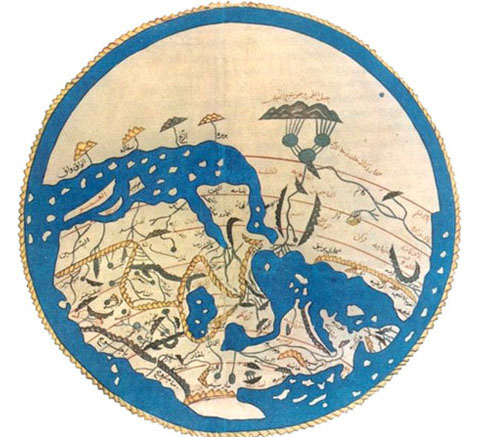Article of the Month - October 2022
“The Queen of Herbs:
A Plant’s-Eye View of the Sephardic Diaspora,”
(Sarah Abrevaya Stein: History / Alan D. Leve Center for Jewish Studies, UCLA)
Sarah Abrevaya Stein, “The Queen of Herbs: A Plant’s-Eye View of the Sephardic Diaspora,”
Jewish Quarterly Review 112 (2022), 119–38.
Keywords: Mediterranean • Sephardic • Migration • Diaspora • Los Angeles • Seattle • botany • ethnobotany • plants • Ottoman Empire • Rhodes • Diaspora • gardens and gardening • folklore • gender • women • Ladino
Publisher’s Abstract:
This ethnobotanical, historical study explores modern Sephardic Jews’ abiding affection for ruta graveolens, rue, or ruda (as it is known in Ladino). Folkloric writing on ruda has emphasized the immutability of Mediterranean Jewish folkways, but ruda has a history that reveals how a plant can further a particular diaspora—not the Jewish diaspora from biblical Israel, nor the Sephardic diaspora from medieval Iberia, but the Jewish diaspora from the modern Ottoman Balkans. Ruda offers a fresh perspective on the caterwaul of change engulfing modern Sephardim, refocusing attention from politics to the intimate, tactile, and gendered.
Nomination Statement:
This article’s "plant’s-eye view of the Jewish world" offers novel historical analyses that draw the reader into thinking anew about diaspora, migration, and the relocation of culture, especially in gendered ways. The many roles of rue or ruda, the "queen of herbs," in trans-generational and transnational Sephardic Jewish home life allow the author to center the Ottoman Mediterranean and the Balkans rather than Iberia in uncovering the plant's journey from the eastern Mediterranean to the United States. This treatment is an example of Mediterranean studies at its best, transcending a limited geographically-centered Mediterranean in order to span centuries and continents in a global frame.
Authors’ Comment:
A historian of modern Mediterranean Jewries, I have been thinking, lately, about Sephardic Jews' relationship to land, landscape, and botany--and to the larger questions of what made Jews Mediterranean and how this region, in its very physicality, shaped Jewish culture. “The Queen of Herbs: A Plant’s-Eye View of the Sephardic Diaspora” (Jewish Quarterly Review 1/112, 2022) is an ethnobotanical, historical study that explores modern Sephardic Jews’ abiding affection for ruta graveolens, rue, or ruda (as it is known in Ladino). Folkloric writing on ruda has emphasized the immutability of Mediterranean Jewish folkways, but ruda has a history that reveals how a plant can further a particular diaspora—not the Jewish diaspora from biblical Israel, nor the Sephardic diaspora from medieval Iberia, but the Jewish diaspora from the modern Ottoman Balkans. Ruda offers a fresh perspective on the caterwaul of change engulfing modern Sephardim, refocusing attention from politics to the intimate, tactile, and gendered. For those who would like to follow my current intellectual preignitions further, a recent, twinned article, “Botánica Sephardica” (Comparative Studies in Society and History, 64/3, 2022) traces the surprising genealogy of a Jewish-owned botánica located in East Harlem in the 1930s and 1940s. Botánicas are understood to manifest an intricate, transatlantic religious, spiritual, and healing world, offering herbal products, sacramental goods, ritual implements, and counseling to Italian, Latinx, Black, and Caribbean practitioners of folk Catholicism, herbalism, hoodoo, Vodou, Santería, Espiritismo, Curanderismo, Òrìṣà worship and other ethnomedical and spiritual systems. Yet this botánica was owned by an Eastern Mediterranean Jew from the Ottoman/Italian island of Rhodes, and it integrated Sephardic and Mediterranean histories and sources of inspiration—including an abiding commitment to herbalism and plant-based healing.
Would you like to discuss this article?
Start a thread on the Mediterranean Seminar list-server
See the other Articles of the Month here.
